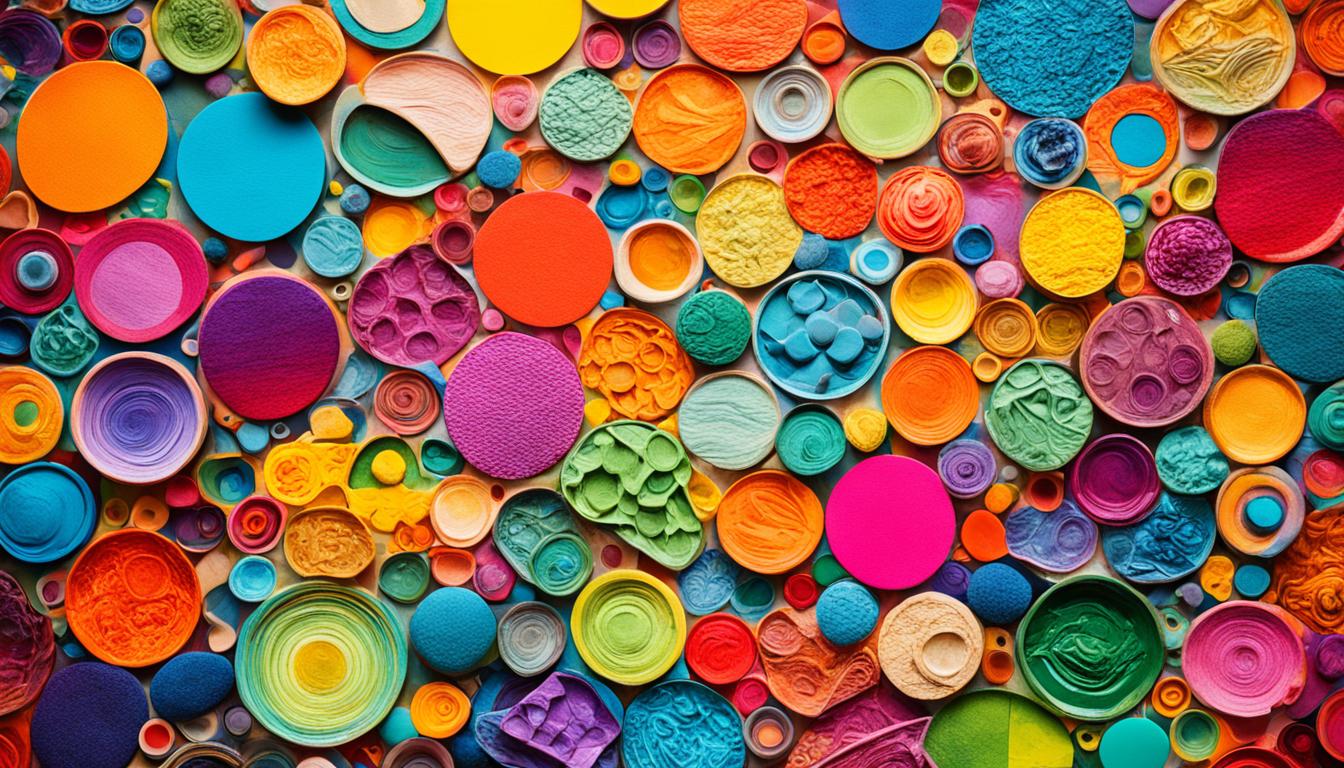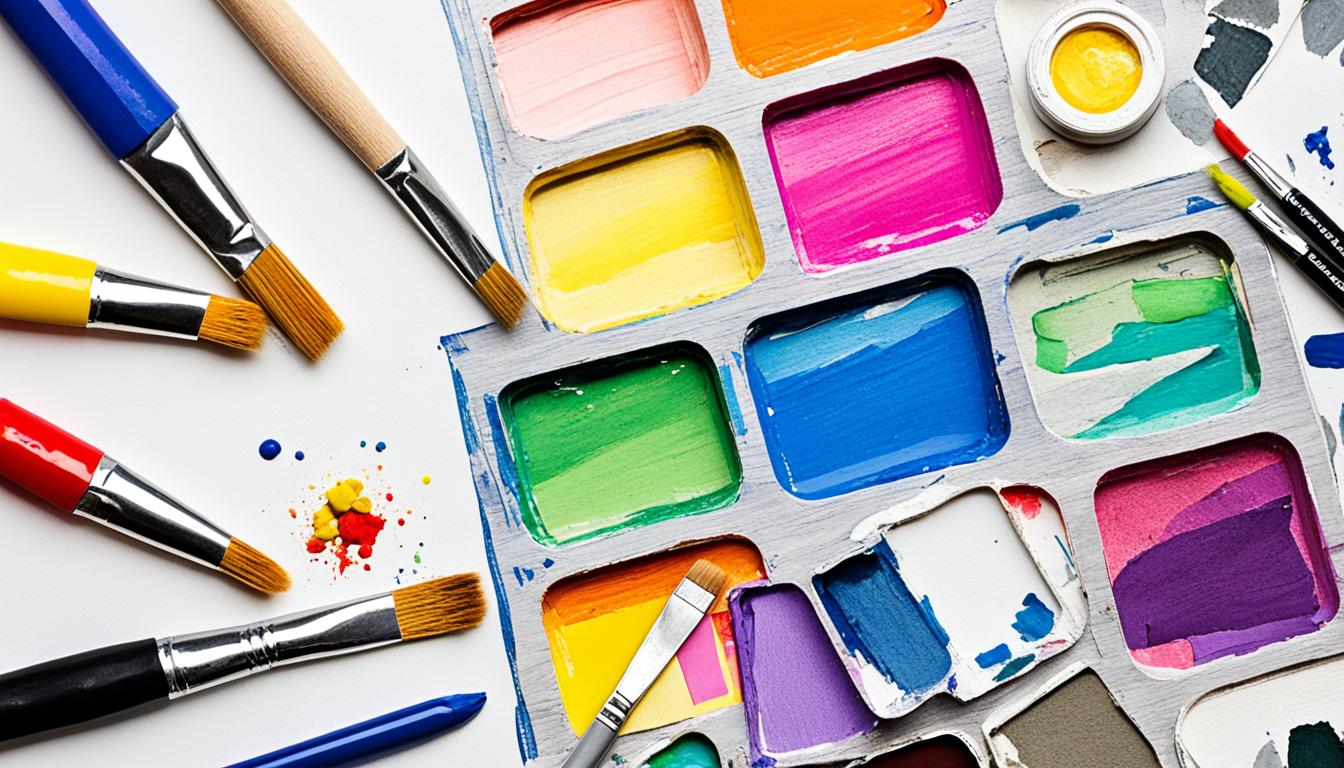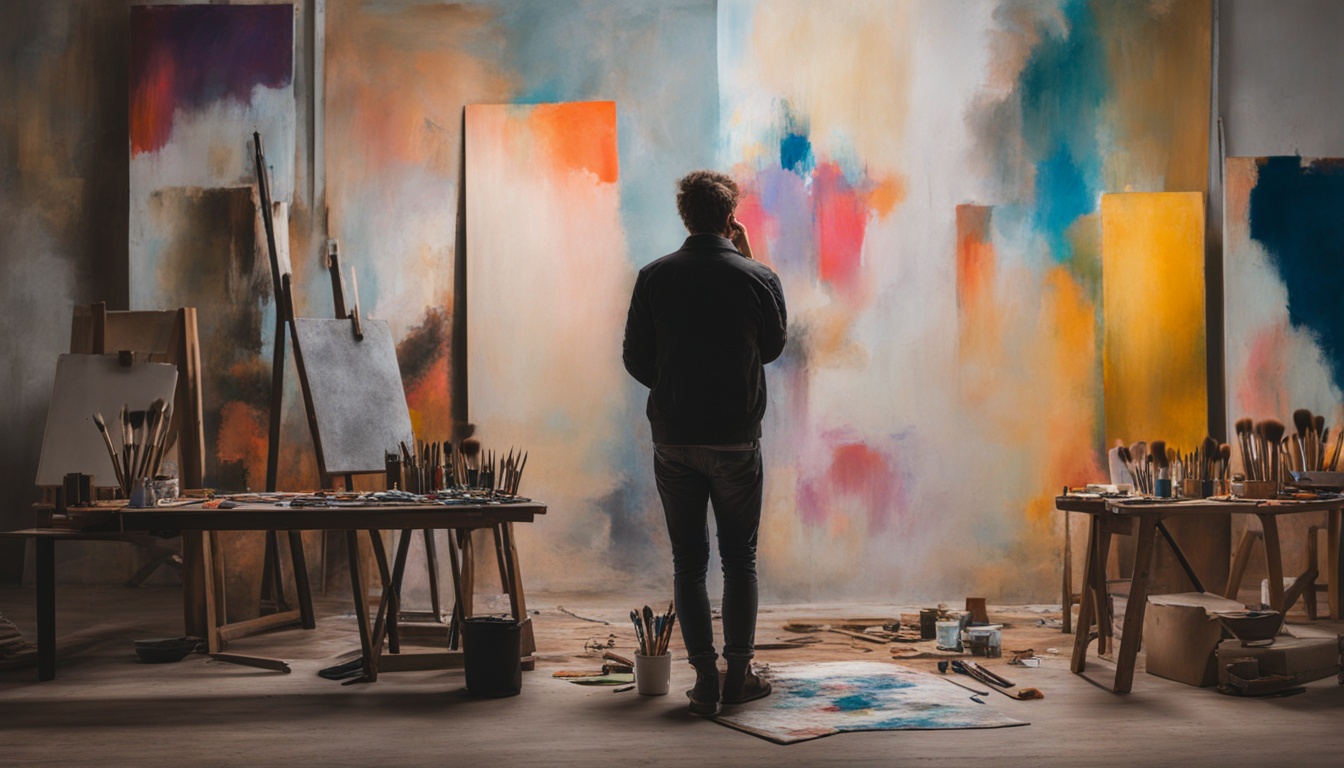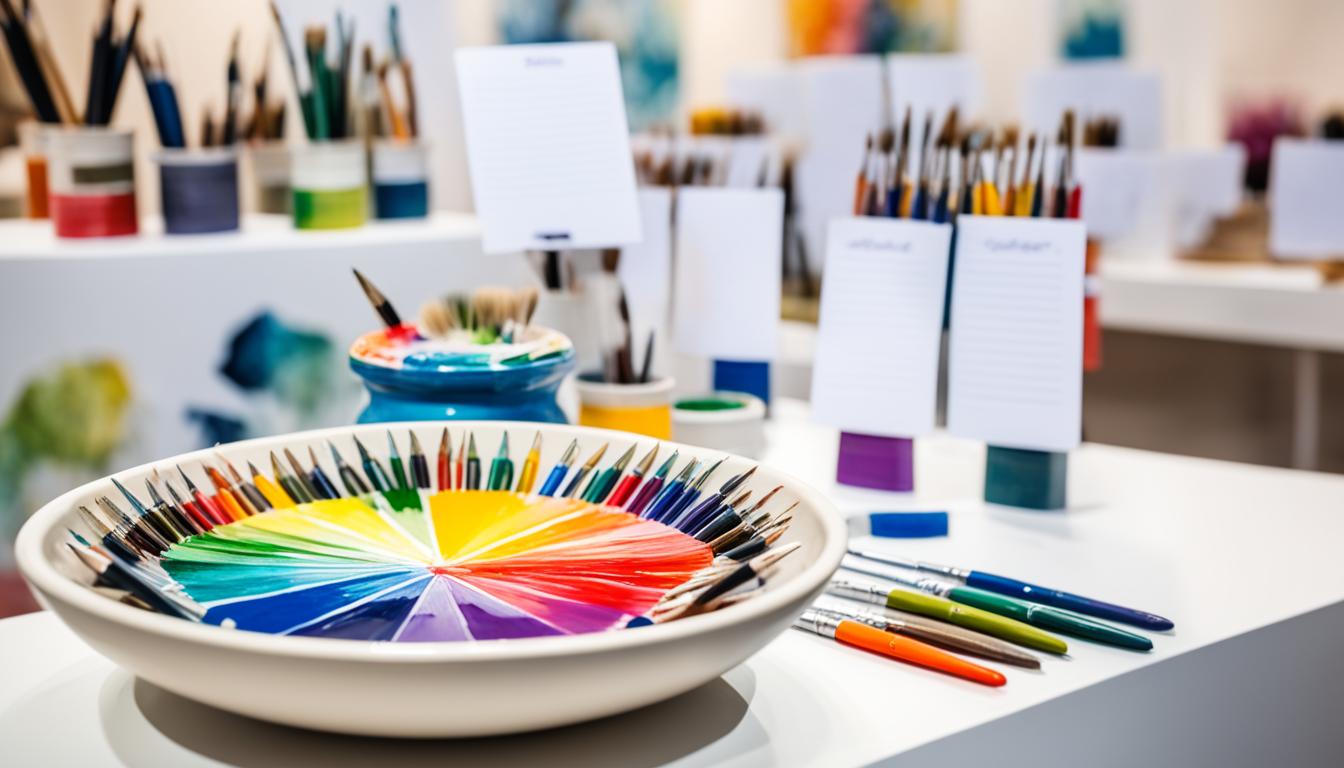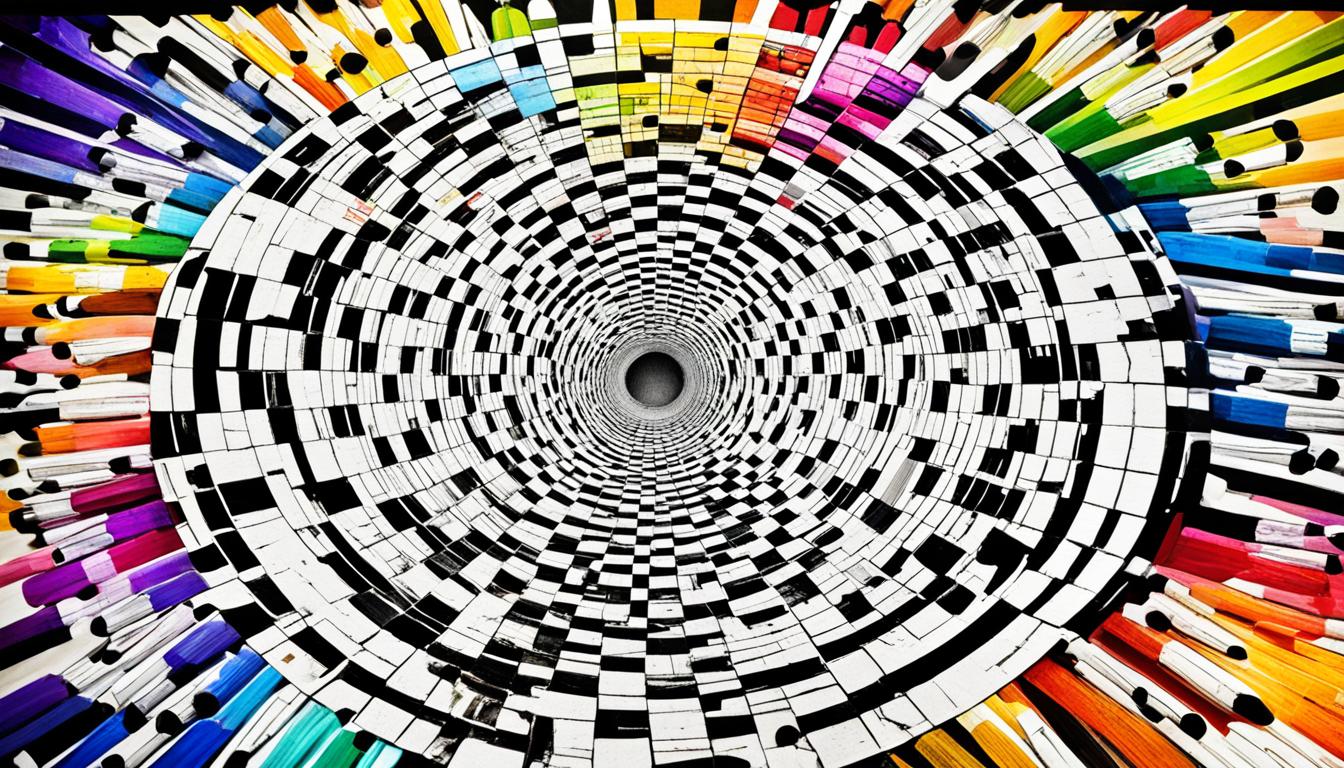Have you ever found yourself standing in front of a captivating painting, feeling an indescribable connection with the colors and forms? Art has an extraordinary ability to ignite our emotions and inspire creativity, yet the journey through the diverse world of art can sometimes feel overwhelming. As you embark on your academic path, finding engaging art appreciation paper ideas becomes crucial in translating that passion into insightful exploration. From the stunning intricacies of Rococo interior design to the modern influences of pop art, there are countless artistic avenues waiting for you to discover. This article is here to guide you through that maze, offering a curated list of topics that will not only enhance your understanding but also foster your creative spirit as an art student.
Key Takeaways
- Art appreciation paper ideas help connect personal experiences to broader visual themes.
- Engaging topics for art students include influential movements and contemporary artists.
- Exploring different epochs enriches your knowledge of art history and styles.
- Utilizing hands-on art project inspirations can enhance learning and engagement.
- Visiting art museums and utilizing virtual tours fosters appreciation in students.
Understanding Art Appreciation
Art appreciation is a vital skill that enhances your visual arts understanding. It involves recognizing and interpreting various artistic forms, along with their historical context and cultural implications. Engaging with art goes beyond viewing; it includes exploring the emotional and societal narratives that these works convey. You’ll find that the importance of art knowledge becomes evident through experiences such as street art visits and gallery exhibitions that highlight the rich tapestry of community expression.
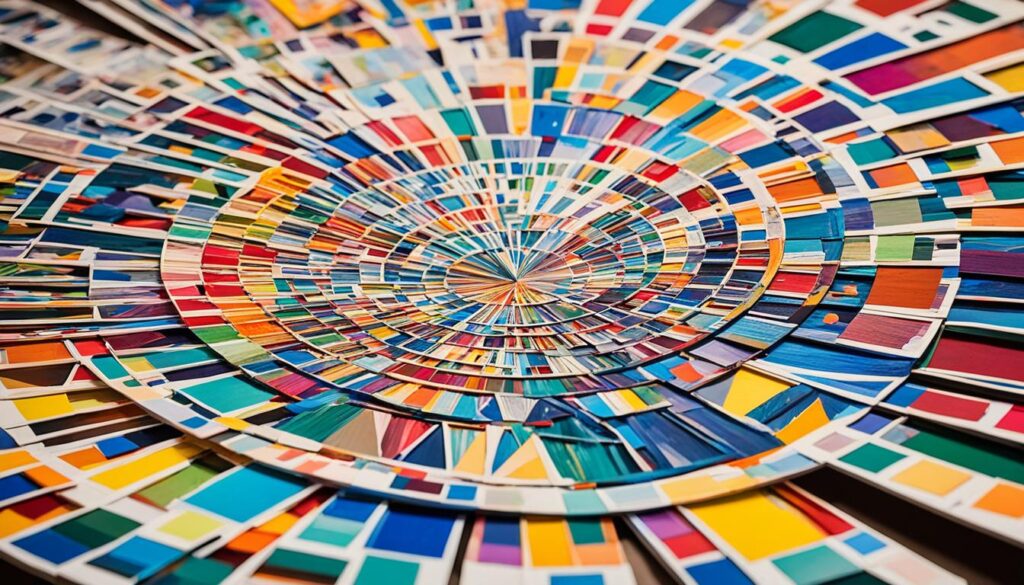
Incorporating art into your daily environment is especially beneficial for children. Displaying art around the home cultivates an early appreciation and understanding of artistic expression. Moreover, encouraging visits to museums, where you can engage with diverse art collections, plays a critical role in developing both personal insights and broader cultural perspectives. In these settings, interactive elements like scavenger hunts can captivate young minds, making museum experiences memorable.
With the growing acceptance of graffiti as an art form, discussions around public art have gained momentum. Exploring the social significance of these creations fosters important conversations about community identity and artistic expression. Students are encouraged to analyze artworks critically, sharing their insights without the pressure of defining a ‘correct’ viewpoint. Art analysis discussions empower individuals to make logical inferences, focusing on explicit content while recognizing the subjective nature of interpretation.
To deepen your understanding, consider examining the different elements and techniques used in art. Questions guiding this exploration can delve into the central themes and ideas an artist conveys, allowing for a comprehensive analysis of the work’s impact. Furthermore, understanding technical, connotative, and figurative meanings enhances the overall experience, bringing you closer to the artist’s intent. Active inquiry into the visual elements—lines, shapes, and colors—will shape your perception, enabling a richer engagement with art.
| Strategies for Enhancing Art Appreciation | Benefits |
|---|---|
| Visit street art and galleries | Encourages community engagement |
| Integrate art in home settings | Stimulates early artistic interest |
| Engage children in museums | Promotes interactive learning |
| Discuss public art’s significance | Fosters critical thinking |
| Use inquiry-based analysis | Encourages personal reflection |
Why Art Appreciation is Important for Students
Art appreciation serves a vital function in education, significantly enhancing the art education benefits for students. Engaging with art not only nurtures creativity but also cultivates critical thinking through art. As students analyze and interpret various artworks, they develop skills that are crucial for their academic and personal growth. Furthermore, art appreciation writing allows students to articulate their thoughts and feelings about art, honing their communication and writing skills. By expressing their opinions and interpretations, students also learn how to engage in thoughtful and respectful discussions about art, thereby fostering a sense of empathy and understanding. Overall, art appreciation in education provides a well-rounded experience that enriches students’ intellectual and emotional development.
The role of art in education cannot be overstated. A report by the Rand Corporation reveals that visual arts foster deeper connections among individuals, promoting community cohesion. Furthermore, studies indicate that students who participated in arts education, such as the Art Appreciation course offered by StraighterLine, demonstrate notable improvements in writing achievements and a decline in disciplinary infractions.
In Houston public schools, for instance, art education practices have been linked to increased student engagement and higher aspirations for college. Integrated curricula involving art enable students to retain information effectively, appealing to diverse learning styles. The National Core Arts Standards guide students through various stages of artistic development, showcasing how valuable art can be across multiple disciplines.
Many employers seek skills developed through arts participation, including problem-solving and teamwork, emphasizing the practical relevance of art appreciation. Statistics highlight disparities in access to art education across the Southern and Northeastern regions of the U.S., pinpointing a need for greater equity in these enriching experiences.
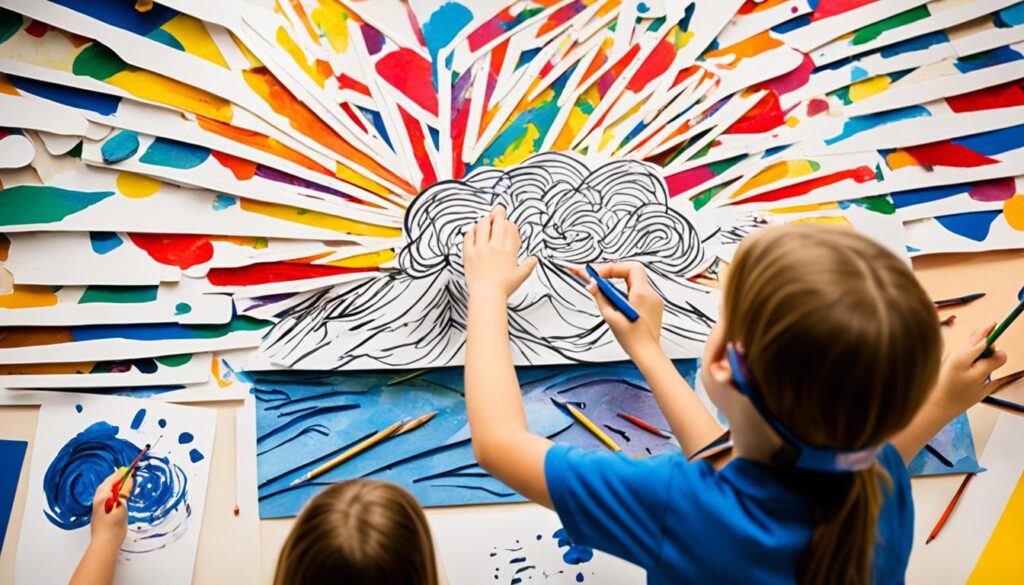
The Benefits of Exploring Different Artistic Styles
Engaging with various artistic styles offers numerous advantages that can enhance your understanding and appreciation of art. By participating in artistic styles exploration, you encounter an array of techniques and expressions that can foster creativity. This rich experience encourages a flexible mindset, conducive to innovation and experimentation.
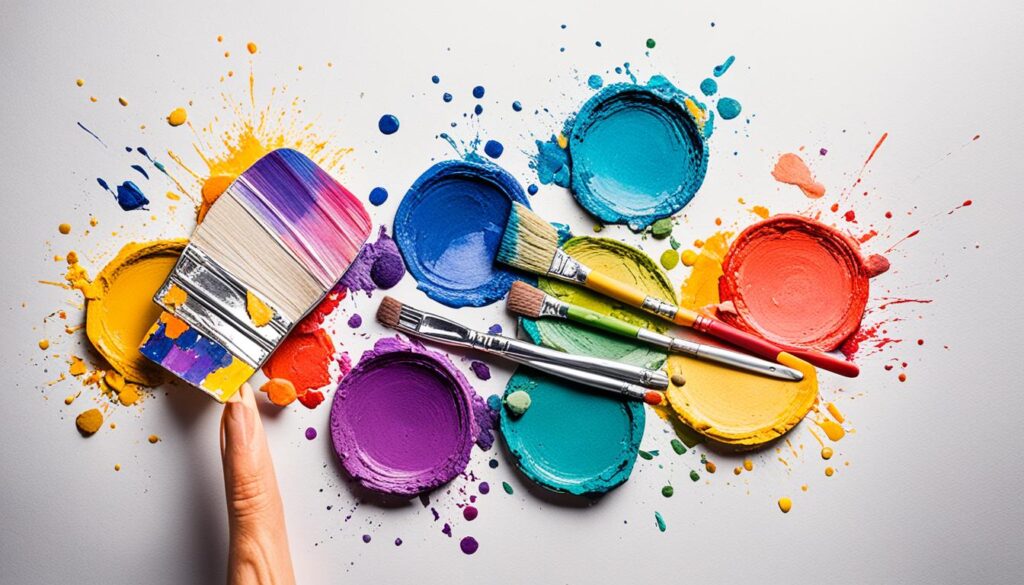
One key benefit of diverse art is the expanded perspective it provides. As you delve into movements such as Impressionism, Expressionism, and Abstract Art, you discover how these styles emerge from specific cultural and historical backdrops. This awareness deepens your creative endeavors while enhancing visual arts diversity. Understanding the contexts of these styles can spark thoughtful conversations about the role of art in society.
Moreover, exploring different forms of artistic expression introduces you to personal narrative and communal storytelling. Art creates avenues for meaningful connections and relationships, as you share insights and experiences with others. When you attend creative classes or workshops, the collaborative environment can offer fresh inspiration and a deeper understanding of the artistic process.
The impact of engaging with various artistic expressions extends beyond personal enjoyment. The skills and connections formed through artistic styles exploration can greatly benefit problem-solving in diverse fields such as business, engineering, and science. Such interdisciplinary connections highlight the intelligence and adaptability that observing visual arts diversity can cultivate.
Art Appreciation Paper Ideas
Exploring the realm of art appreciation opens pathways for creative engagement and critical analysis. When crafting your art appreciation paper, consider delving into specific projects that highlight the art movements influence on contemporary practices. This approach fosters a deeper understanding of how historical contexts and artistic styles shape modern artwork.
Exploring the Influence of Different Art Movements on Modern Art
Investigate how notable movements such as Impressionism and Cubism laid the groundwork for current artistic expressions. Your paper could explore the transition from traditional techniques to innovative styles, highlighting the cultural significance in art that these movements hold today. By analyzing pivotal artists and their contributions, you can illustrate the lasting impact of their works on contemporary artists.
Comparing and Contrasting Artists from Various Eras
This topic allows for a thorough examination of how different artists resonate with their respective audiences based on their unique perspectives and contexts. You could compare the styles, techniques, and thematic elements of artists from the Renaissance to the present day. Such a comparative analysis strengthens your paper’s argument while emphasizing how artists influence each other across time, enriching the discussion surrounding art appreciation paper ideas.
Delving into the Cultural Significance of Famous Artworks
Famous artworks serve as windows into the values and experiences of their time. An exploration of the cultural significance in art can uncover how societal issues influence artistic creation. Engage with well-known pieces, evaluating their impact not only on the art world but also on social conversations of the era. This inquiry will contribute richly to your understanding of art and its role in society.

Visual Arts Analysis Topics
Visual arts analysis topics open the door to deep examination of artistic elements. Focusing on color theory in art can reveal how color choices influence emotions and set the mood within artworks. Such exploration allows students to understand the nuances of color interactions and their psychological effects. Another compelling area is the emotional response to landscape paintings. These works often depict nature in ways that evoke strong feelings and prompt reflection in viewers.
Examining Color Theory and Its Impact on Art
Color theory is a fundamental topic in the visual arts. By analyzing color combinations and their effects, you can uncover how different colors invoke specific emotions. The use of warm colors often suggests energy and excitement, while cool colors can create calm and tranquility. Understanding these principles enhances your ability to interpret and appreciate artworks more deeply.
The Emotional Response to Landscape Painting
Landscape paintings evoke a range of feelings. They capture the beauty of nature and can make you feel connected to the environment. These paintings may inspire feelings of nostalgia, peace, or even solitude. Delving into landscape painting feelings allows for exploration of how these representations influence your emotional state and perceptions of the natural world.

| Topic | Description | Emotional Impact |
|---|---|---|
| Color Theory in Art | Investigation of color combinations and their psychological effects. | Evokes emotions ranging from excitement to calmness. |
| Landscape Painting Feelings | Examination of emotions generated by scenery depiction. | Can invoke peace, nostalgia, or solitude. |
Art History Research Paper Subjects
Art history research subjects provide an engaging platform for diving deep into the intricacies of artistic movements and contributions throughout the ages. In your quest for enlightening topics, consider focusing on the impact of women in art history, which reveals significant contributions that have often remained in the shadows. You might also investigate the fascinating Renaissance art exploration, emphasizing the revival of classical ideas and innovations that shaped the art world.
Investigating the Role of Women in Art History
Women have played an essential role in shaping art history, yet their contributions frequently go unrecognized. Exploring the lives and works of artists such as Artemisia Gentileschi or Georgia O’Keeffe highlights their immense influence on various art movements. Delving into the study of female artists unveils the challenges they faced and the triumphs achieved against societal norms.
Exploring Artistic Styles During the Renaissance Era
The Renaissance period marked a significant shift in artistic expression, characterized by a renewed interest in classical themes and humanism. By examining key figures like Leonardo da Vinci and Michelangelo, you can uncover how their innovations set the foundation for subsequent artists. This Renaissance art exploration helps in understanding the transformative power of art and its connection to cultural developments of the time.

| Art Historical Focus | Percentage of Topics |
|---|---|
| Renaissance Period Influence | 15% |
| Bauhaus Movement | 10% |
| Comparative Study of Western and Eastern Art | 8% |
| Symbolism in Gothic Architecture | 5% |
| Cubism | 7% |
| Expressionism | 6% |
Fine Arts Essay Prompts
Engaging with fine arts essay prompts allows you to explore significant themes within the artistic world. These prompts provide unique opportunities to delve into various aspects of art, fostering critical thinking and creativity. Two specifically thought-provoking topics include the evolution of sculpture techniques and the role of art in social change.
Discussing the Evolution of Sculpture Techniques
Investigating the evolution of sculpture opens a dialogue on how materials and methods have transformed over time. Students can explore advancements ranging from ancient techniques using stone and wood to modern practices that incorporate technology such as 3D printing. This examination not only charts technical progress but also reflects shifts in artistic thought and cultural values. The analysis can address how historical events influenced the artistic vision, linking past methods to contemporary interpretations.
Analyzing the Role of Art in Social Change
Art has long served as a catalyst for social change, reflecting society’s struggles and triumphs. Through this lens, you can analyze how artists use their craft to comment on political issues or advocate for social justice. Consider artworks from different eras that have sparked conversations and mobilized communities. Evaluating the impact of these works invites deeper understanding of art’s power to shape cultural and societal landscapes. This analysis will help recognize the ongoing relationship between art and the movements that define our history.

Artwork Interpretation Paper Concepts
When tackling the rich world of art, artwork interpretation ideas provide a valuable framework for exploring both the form and the message behind various pieces. Engaging in analyzing art meaning invites you to delve deeper into the artist’s intentions, as well as historical and cultural contexts that shape artistic expression. A critical analysis can lead to a deeper understanding of art, uncovering layers of significance often overlooked in casual observations.
Consider these approaches when crafting your interpretation:
- Examine the use of color, line, and texture in the work. How do these elements contribute to the overall mood or theme?
- Investigate the symbols used in the artwork. What do they reveal about the culture or the artist’s personal experiences?
- Reflect on the historical context surrounding the piece. How might events from that time influence the artist’s approach or message?
- Compare and contrast similar artworks. What key differences may impact your interpretation of each piece?
In the 2023 landscape of art essays, exploring topics like the evolution of techniques or analyzing specific artists enriches your interpretation. With over a thousand art-related tasks completed by seasoned professionals, the wealth of resources available enhances your journey in understanding art on a profound level.
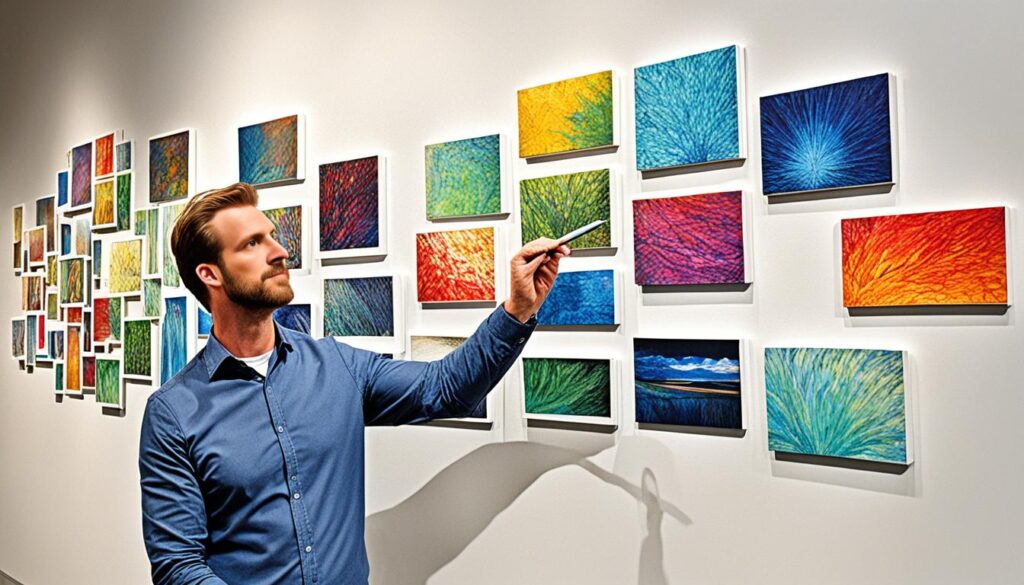
Art Movements Study Topics
Exploring art movements offers a rich landscape for study that connects historical context with contemporary influences. These art movements study topics not only dive into their significance but also examine how they resonate within modern culture. Here are two engaging themes that showcase the continuity between past and present artistic expression.
The Influence of Impressionism on Contemporary Art
The Impressionist movement, with its emphasis on light, color, and everyday subject matter, laid the foundation for many contemporary artistic practices. Modern artists, inspired by techniques introduced by figures like Claude Monet and Pierre-Auguste Renoir, often embrace the spontaneity and emotion characterized by Impressionism. By analyzing this influence, students can gain insight into how these historical techniques are reflected in today’s art.
Symbolism in Surrealism and Its Impact on Modern Culture
Surrealism emerged as a revolutionary art movement, challenging traditional perspectives on reality and dream states. Its use of symbolism in modern art continues to resonate. Artists today often draw on surrealist elements to explore the subconscious and express complex emotions. Examining these connections reveals how surrealism influences contemporary creativity, from visual arts to literature and philosophy.
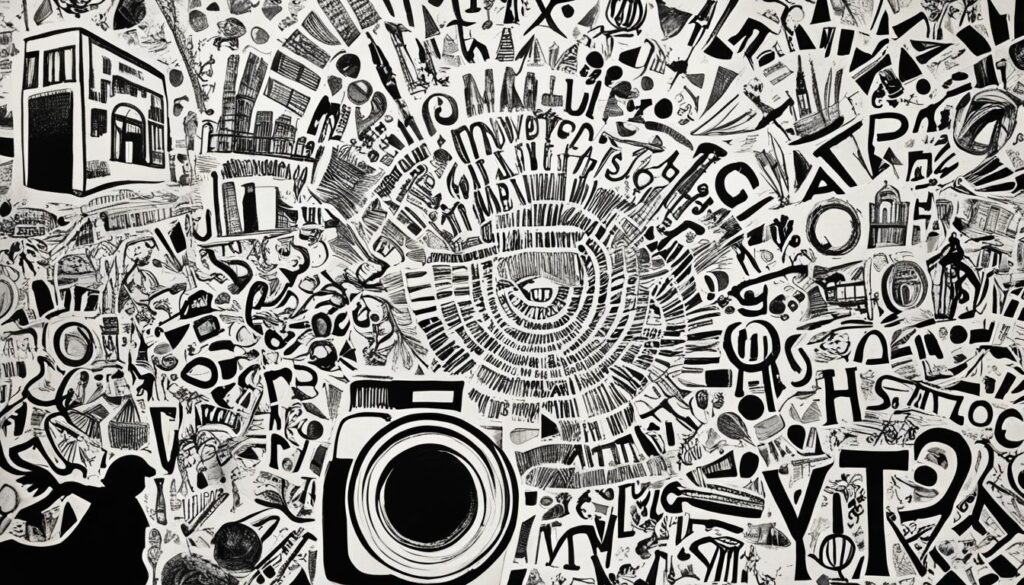
Aesthetic Analysis Writing Prompts
Engaging with the visual elements of art can significantly enhance your appreciation and understanding of different styles. Aesthetic analysis writing prompts can guide you in exploring the profound beauty in abstract art. By focusing on form, color, and composition, you can uncover expressive qualities that exist independently of recognizable subjects. These prompts not only cultivate your analytical skills but also assist in articulating personal reflections on the role of aesthetics in art.
Examining the Beauty of Abstract Art
Abstract art invites you to immerse yourself in an experience that transcends the literal. Consider these points while engaging with abstract pieces:
- Identify the primary colors and shapes used in the artwork.
- Reflect on how the composition makes you feel at first glance.
- Explore the artist’s choice of materials and techniques to convey emotion.
These exercises encourage you to develop a vocabulary around your perceptions, enhancing your appreciation for the more nuanced aspects of art.
Understanding the Role of Aesthetics in Artistic Expression
Aesthetics play a crucial role in how art resonates with viewers. The following prompts invite deeper inquiry:
- How does the use of light and shadow influence the overall mood of the piece?
- What elements of design contribute to your understanding of the artwork’s message?
- Consider how your personal experiences inform your connection to the piece.
Through these writing exercises, you can sharpen your perceptual skills and cultivate a critical language for art appreciation. Below is a detailed table illustrating key elements and principles of art that aid in aesthetic analysis:
| Elements of Art | Principles of Design |
|---|---|
| Color | Unity |
| Line | Balance |
| Shape | Emphasis |
| Texture | Harmony |
| Space | Variety |
Use these insights to foster your engagement with art, combining your learned knowledge and personal experiences. This approach enhances your ability to express your feelings and thoughts regarding the beauty in abstract art and the intricate role of aesthetics in art.

Conclusion
As we wrap up this exploration, it’s important to recognize the profound value of engaging with art appreciation. The summary of art appreciation discussed throughout this article highlights the significance of understanding art history, theory, and the intricate layers of artistic practice. Delving into the rich tapestry of artistic movements, styles, and cultural contexts not only broadens your knowledge but also deepens your emotional connection to the visual arts.
Throughout your academic journey, you have the opportunity to discover various themes and interpretations that can ignite your passion for art. Engaging with art offers a pathway to further exploration in art studies, pushing the boundaries of creativity and critical thinking while expanding your aesthetic sensibility. As you continue to analyze renowned artworks, such as The Girl with a Pearl Earring and The Rape and Massacre in Ermita, consider how these pieces reflect historical narratives and emotional truths that resonate today.
With the valuable insights gained from this article, you are encouraged to keep seeking out fresh perspectives and new artistic styles. Every painting, sculpture, or installation tells a story worth exploring, enriching your understanding of humanity and culture. Embrace the world of art with a curious mind, as each encounter reveals unique interpretations and meaningful dialogues that can inspire you on your journey of appreciation.
